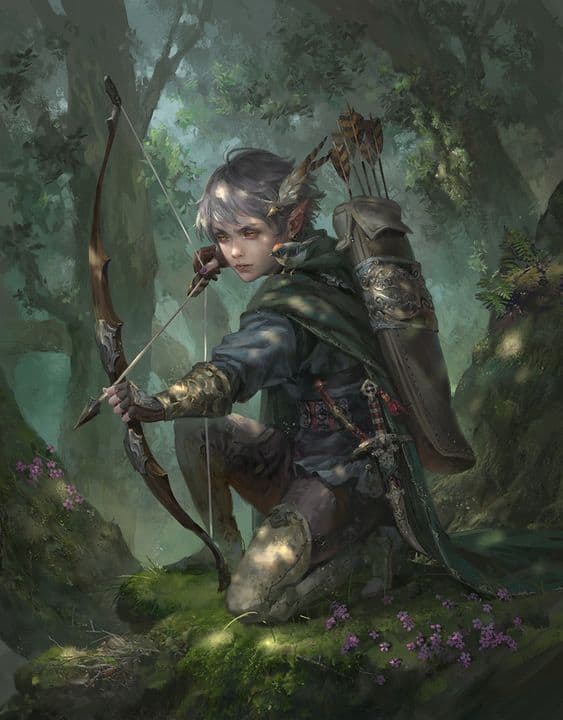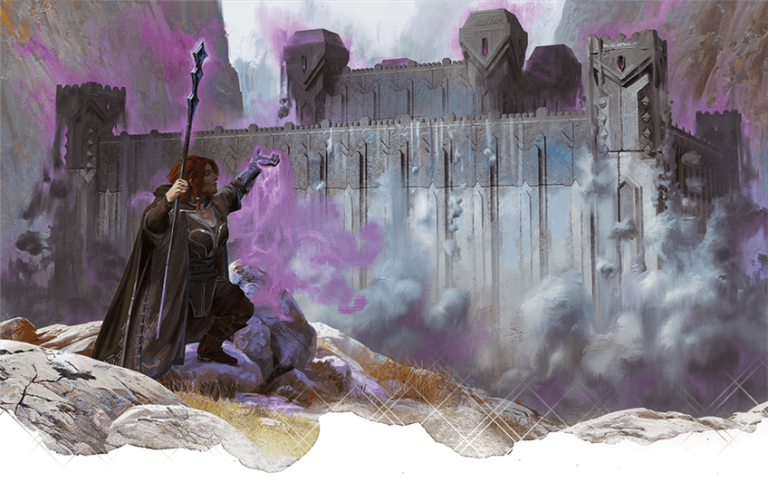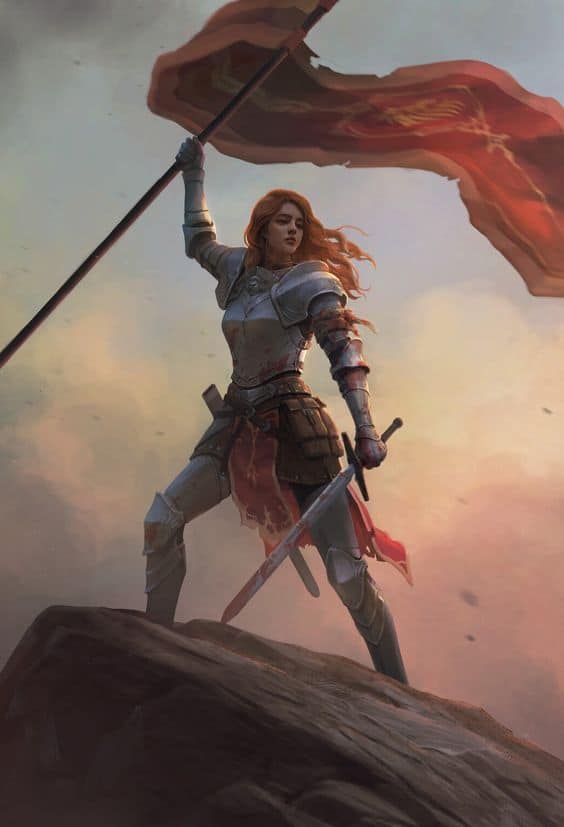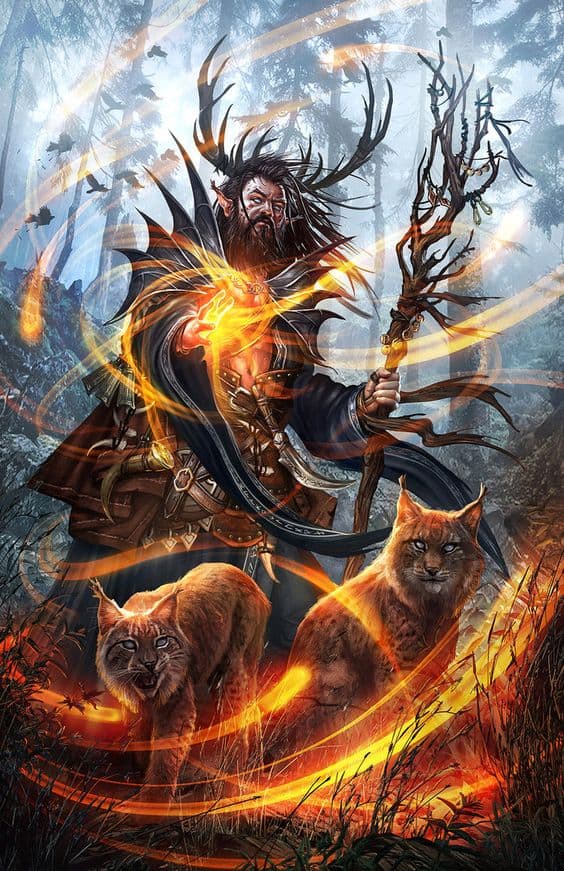D&D 5e: Battle Smith Artificer Guide

D&D 5e: Battle Smith Artificer Guide
Role in the Party
Artificers are an unusual class since a large portion of their power usually comes from their subclass; the core artificer has a lot of versatility but not much in terms of raw power. The three other subclasses cover the whole spectrum from bad to decent to pretty good, but the Battle Smith adds a stellar amount of power to your character.
You not only gain great defensive and support spells, but you can also attack with intelligence, and you get a robot companion with several powerful abilities. No other artificer subclass gives you as much as the Battle Smith.
Epic
Good
Meh
Bad
The Battle Smith Artificer subclass is found in Eberron: Rising from the Last War AND Tasha’s Cauldron of Everything. Click here to pick up your own copy of Ebberon: Rising from the last War OR Click here to pick up your own copy of Tasha’s Cauldron of Everything !
Battle Smith Artificer Features
Tool Proficiency
When you adopt this specialization at 3rd level, you gain proficiency with smith’s tools. If you already have this proficiency, you gain proficiency with one other type of artisan’s tools of your choice.
It’s not a strong feature, but like with other artificer subclasses, it’s just a small flavor thing to make you proficient in the tools the subclass uses. It would be weird to build metal parts for a robot dog when you aren’t proficient in the tools used to make them.
Battle Smith Spells
Starting at 3rd level, you always have certain spells prepared after you reach particular levels in this class, as shown in the Battle Smith Spells table. These spells count as artificer spells for you, but they don’t count against the number of artificer spells you prepare.
3rd: Heroism is a powerful way to end the frightened condition on someone while giving them extra durability. The Shield spell is utterly ridiculous on someone who already has a good armor class, and with infusions and your armor proficiencies, you can have a great armor class.
5th: Branding Smite requires a bonus action and your concentration, and you already have to use your bonus action every round to make your steel defender attack. If your steel defender is dead, this is at least a viable option in a pinch. Warding Bond is an effective way of protecting a specific ally if you think they’ll die without your assistance, but any damage done to that target will bypass your great AC, and you don’t have a ton of hit points yourself. It doesn’t require concentration and has a decent duration, so you can use it out of combat.
9th: Aura of Vitality is underwhelming when used in combat, but out of combat, you can use one spell slot to restore 20d6 hit points, and you can distribute them among party members as needed. Solid spell, unlike Conjure Barrage, which is a cone spell that does 3d8 damage and uses a 3rd level slot, so it’s like a terrible version of Fireball.
13th: Aura of Purity is an effective way to prevent and end conditions and reduce poison damage for your whole party. Fire Shield is an excellent way to get resistance to a damage type for a whole fight without concentration or to deal a lot of extra damage to melee enemies. Try to cast it before a fight if possible.
17th: Banishing Smite lets you possibly take an enemy out of the fight completely if you reduce them to 50 hit points or less with your attack dealing an extra 5d10 damage, but if you guess wrong, you just used a bonus action to deal 5d10 extra damage and nothing else. It might be worth giving up a steel defender attack though. Mass Cure Wounds has underwhelming healing for the level and costs an action, but it works instantaneously and could bring a lot of allies up from 0 hit points.
Battle Ready
When you reach 3rd level, your combat training and your experiments with magic have paid off in two ways:
You gain proficiency with martial weapons.
When you attack with a magic weapon, you can use your Intelligence modifier, instead of Strength or Dexterity modifier, for the attack and damage rolls.
This feature instantly transforms you into a weapon user. Low strength? Only 14 dexterity? No problem! Just use your 16-20 intelligence to attack instead. You’re sort of like a paladin with a built-in hexblade dip.
This works well with the artificer’s special form of half casting: they get spell slots at 1st level instead of 2nd, and they get infusions at 2nd level, so you’re still a viable character for the first two levels if you wanted to increase dexterity and have a low dexterity and strength.
Steel Defender
By 3rd level, your tinkering has borne you a faithful companion, a steel defender. It’s friendly to you and your companions, and it obeys your commands. See its game statistics in the Steel Defender stat block, which uses your proficiency bonus (PB) in several places. You determine the creature’s appearance and whether it has two legs or four; your choice has no effect on its game statistics.
In combat, the defender shares your initiative count, but it takes its turn immediately after yours. It can move and use its reaction on its own, but the only action it takes on its turn is the Dodge action, unless you take a bonus action on your turn to command it to take another action. That action can be one in its stat block or some other action. If you are incapacitated, the defender can take any action of its choice, not just Dodge.
If the Mending spell is cast on it, it regains 2d6 hit points. If it has died within the last hour, you can use your smith’s tools as an action to revive it, provided you are within 5 feet of it and you expend a spell slot of 1st level or higher. The steel defender returns to life after 1 minute with all its hit points restored.
At the end of a long rest, you can create a new steel defender if you have smith’s tools with you. If you already have a defender from this feature, the first one immediately perishes. The defender also perishes if you die.
I won’t post the whole stat block, but it’s a fantastic ally. This medium construct has 15 AC, hit points equal to (2+int mod+(5*artificer level)), 40 feet of speed, a few construct-appropriate immunities, built in perception expertise, darkvision, immunity to surprise, and uses your spell attack bonus to hit with its melee attack for 1d8+proficiency force damage. It can also use an action to give itself or another construct/object some healing, and it has a special reaction that can impose disadvantage on attack rolls against nearby creatures. It also has hit dice it can use to heal on a short rest, and it regains 2d6 hit points when the Mending cantrip is used on it. Lastly, you can use any spell slot to restore it to full HP if it died in the last hour, and you can make a new one as part of a long rest.
How good is this? It’s excellent. It’s better than the Tasha’s version of the Beast Master at low levels due to that delicious reaction, but you can’t give it a flying or swimming speed without magic and it doesn’t get much extra damage as you level up and has no extra attack, so the Beast Master’s beast is likely better at very high levels.
Extra Attack
Starting at 5th level, you can attack twice, rather than once, whenever you take the Attack action on your turn.
A standard feature for weapon users that keeps their damage useful at mid to high levels. Unusually enough, it comes from your subclass and not your core class features.
Arcane Jolt
At 9th level, you’ve learned new ways to channel arcane energy to harm or heal. When either you hit a target with a magic weapon attack or your steel defender hits a target, you can channel magical energy through the strike to create one of the following effects:
The target takes an extra 2d6 force damage.
Choose one creature or object you can see within 30 feet of the target. Healing energy flows into the chosen recipient, restoring 2d6 hit points to it.
You can use this energy a number of times equal to your Intelligence modifier (minimum of once), but you can do so no more than once on a turn. You regain all expended uses when you finish a long rest.
This is a bootleg smite ability that can also be used to heal, and unlike a real smite, it doesn’t cost a spell slot. Remember that the 2d6 force damage can be doubled on a crit, but also remember that this is only 1/turn. It’s a free 10d6 or more damage or healing per day, so it’s a useful feature. 2d6 healing isn’t much healing, but you can use it like a Healing Word would be used to bring up downed allies.
Improved Defender
At 15th level, your Arcane Jolt and steel defender become more powerful:
The extra damage and the healing of your Arcane Jolt both increase to 4d6.
Your steel defender gains a +2 bonus to Armor Class.
Whenever your steel defender uses its Deflect Attack, the attacker takes force damage equal to 1d4 + your Intelligence modifier.
All three of these are small features, but they add together to make a decent but somewhat underwhelming capstone. You and your steel defender just become slightly better at damage and defense.
Read More: Complete 5th Edition Artificer Guide
Strengths
Your damage will be better than any other artificer, and your defense is about as good as the Armorer, especially with the steel defender’s reaction. Your spells and features will allow you to support and protect allies while doing good damage.
Weaknesses
You have no additional protection against saving throws, and you and your steel defender can both be hit at the same time by any damaging ability with an area of effect. If your steel defender dies, you lose a huge chunk of your subclass, and if you run out of spell slots, you lose your exceptional tanking ability and most of your support, and you’re mostly just a worse fighter. Make sure to manage your resources well: as a half caster, you can’t throw spell slots at every problem all the time.
Best Race Options
Any small race can ride the steel defender as a mount, which reliably lets them benefit from the steel defender’s reaction. However, if your table is using the Volo’s Guide to Monsters version of the Kobold, you can use pack tactics with your mount to get advantage on most attacks. The Monsters of the Multiverse version is also a good race, but its features don’t synergize as well.
If your table doesn’t let you move ability scores around using the rules in Tasha’s Cauldron of Everything, the Rock Gnome is a great pick. +2 to intelligence and +1 to constitution are the ability scores you want, and Artificer’s Lore and Tinker let you be more of an expert in artificer things.
This one is a bit of a stretch, but if you play a Dhampir that was once a Warforged (also a solid race), you can become a robot that’s fueled by blood, and it’s easy to flavor the steel defender as a robot dog that’s also fueled by blood. You’re basically the robots from Ultrakill.
Choosing the Right Skills
There aren’t a ton of thematic skills, but there are several useful ones:
Acrobatics or Athletics will help you when you need to do something physical, but they’re optional since you have a steel defender who can help do them for you, and artificers have teleportation and mobility spell options to avoid grapples.
You’re a smart character, so you can easily become good at any intelligence-based skill: Arcana is the most commonly used one, but any skill that is going to come up in your campaign will work.
Perception is useful on any character, but it’s less useful on you since your steel defender already has a solid bonus. It’s up to your dungeon master how much your steel defender can notice or warn you about though.
Animal Handling may be thematic if you want your steel defender to behave more like an animal, but you can otherwise skip it if you want.
Fitting Feats
Remember that you don’t need Crossbow Expert to fire a heavy crossbow multiple times if you use the Repeating Shot infusion, and you already have a bonus action attack from your steel defender and can’t use the hand crossbow strategy that well, so taking Crossbow Expert at low levels is a bad idea. However, you could take Crossbow Expert at high levels if you ever feel like taking a different infusion for your heavy crossbow or find a powerful magic heavy crossbow.
If you are a small race and want to ride your steel defender, Mounted Combatant is an excellent feat. The enemy can attack your mount, you force it to attack you instead, and then your steel defender uses its reaction to impose disadvantage, and if it hits you anyway, you can just cast Shield. And since your AC is probably already great, you can turn one attack a round into nearly a guaranteed miss and make most of the later attacks miss too.
Some enemies may give up trying to hit you and go attack someone else: Sentinel is a good way to force them to stay near you. Polearm Master is optional since your bonus action is already taken, but heavy polearms with reach can be great on a Medium sized Battle Smith character.
Optimal Backgrounds
The Soldier background is handy if you wanted to play a Warforged who was built for warfare. The background comes with a military rank which can come with some respect, and you can show off your new robot dog to your old squadmates.
If Ravinica backgrounds are allowed, Izzet Engineer is a strong pick and also thematic for any artificers who want to be part of a guild full of studious wizards and mad scientists. You also have some architectural knowledge and have a few more spells added to your spell list.
Guild Artisan is a standard, setting-generic background that works for any skilled craftsman character, and Guild Membership can have some mostly social benefits. Just make sure to pay your 5 gp a month in dues or they’ll come and break your kneecaps.
Multiclassing Options
Like any subclass with a built-in combat pet, too much multiclassing will cause your pet to have low hit points for your level, so keep multiclassing to a minimum if you want to use the pet in combat at all levels.
One level of Fighter will give you the Archery fighting style for +2 to hit, and if you take fighter first, you will also gain heavy armor proficiency. It may be best to not take fighter at 1st level since if you want to use intelligence on attack rolls, you will have a hard time as a level 1 character with low strength/dexterity and no spells. Remember that this delays all your artificer features, including Extra Attack, so level 5 will be rough for you if you take fighter levels before then.
Long adventuring days? Burning through spell slots for Shield and Absorb Elements? Failing tough saving throws? You may consider two levels of wizard and the War Magic subclass for their Arcane Deflection reaction, which is less potent than Shield but more versatile. The downsides are less impactful since you’re a half caster. Divination is also a solid option if your allies use powerful saving throw effects.
If you can fit the ability scores on your build and have short adventuring days, two levels of Paladin will grant you Divine Smite and some other benefits. This is best taken at high levels so that you don’t delay Extra Attack. Combining a bonus action smite spell with a Divine Smite with an Arcane Jolt is excellent burst damage, especially if you get a critical hit. Maybe ask an ally to cast Hold Person so you know you’ll get a crit.
Would I recommend playing a Battle Smith Artificer?
In my opinion, this is the strongest artificer in the game; you are not an overpowered character, but you can do a wide variety of things as a Battle Smith while having solid defense and solid damage numbers. You have a robot companion that you might be able to ride, and it’ll eventually be many times more resilient than even a Find Greater Steed summon. There’s an endless sea of great Battle Smith builds out there, and you will not regret picking this subclass.









